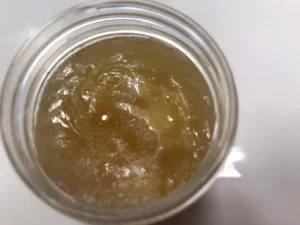What is Petroleum Jelly
Petroleum jelly, a translucent, jelly-like substance, has been a staple in skin care regimes for decades. This semi-solid mixture, derived from petroleum, is renowned for its moisturizing properties.
Characteristics of Petroleum Jelly
Hydration Power: Petroleum jelly on face is an occlusive moisturizer, meaning it prevents your skin from losing moisture. This makes it incredibly effective for dry, chapped skin.
Protective Barrier: When you apply this jelly, it forms a protective layer that shields the skin from environmental factors, like wind and cold weather, reducing the risk of further irritation.
Versatility: Its non-reactive nature makes it safe for use on all skin types, including sensitive skin.
Texture and Consistency: It is thick and somewhat greasy, which helps in creating a lasting barrier, but may not be preferred for use on areas prone to acne.
Production Process
Step 1: Extraction: The journey of petroleum jelly begins with the extraction of crude oil, the primary raw material.
Step 2: Distillation: The crude oil is then distilled to separate heavy waxes and oils, a crucial step in refining.
Step 3: Purification: Through a process called de-waxing, the heavy waxes are removed, leaving behind a mixture of oils.
Step 4: Refinement: This oil mixture undergoes further refinement, removing impurities and ensuring the product is safe for skin contact.
Applications of Petroleum Jelly in Different Industries
Petroleum jelly, known for its versatility, finds numerous applications across a variety of industries such as:
Cosmetics and Skincare: Petroleum jelly is a key ingredient in moisturizers, lip care products, and some makeup items due to its hydrating properties.
Pharmaceuticals: It is used in ointments and balms for healing and protecting skin, as well as in certain laxative formulations.
Personal Care Products: It finds its way into hair and baby care products, particularly for moisture retention and rash prevention.
Industrial Applications: It serves as an effective lubricant for machinery and a protective coating for tools and surfaces against moisture and corrosion.
Candle Making: It is utilized to stabilize candles, improving their burn quality and consistency.
Food Industry: It is applied in food packaging for its non-toxic, water-repellent properties, ensuring safe and durable packaging.
Leather Care Products: It is used as a conditioner and polish, enhancing the moisture and longevity of leather goods.
Art Supplies: It plays a role in conservation, helping to protect and preserve various art materials.
Is Vaseline Petroleum Jelly? Benefits of Vaseline
Yes, Vaseline is a brand name for petroleum jelly. It’s one of the most popular and recognizable forms of this substance.
Skin Hydration: Ideal for treating dry skin conditions, including cracked heels and chapped lips.
Wound Care: Can be applied on minor cuts and burns to protect from dirt and germs.
Beauty Uses: Often used as a base for homemade scrubs, lip balms, or even as a makeup remover.
Prevents Diaper Rash: Acts as a barrier to protect a baby’s delicate skin from moisture.
Nail and Cuticle Care: Regular application can strengthen nails and soften cuticles.
Economical: A small amount goes a long way, making it a cost-effective skincare option.
Does Petroleum Jelly Expire
When it comes to the shelf life of petroleum jelly, it is important to note that it doesn’t spoil in the same way food does. However, its effectiveness can diminish over time. Generally, a jar of petroleum jelly can last for several years when stored properly. This longevity is due to its stable chemical structure, which resists breakdown.
Download Properties


